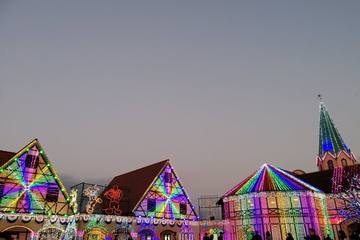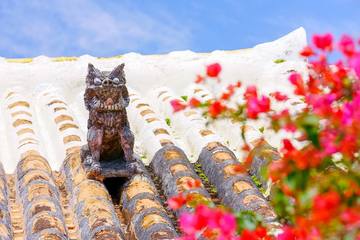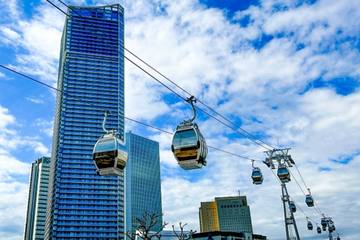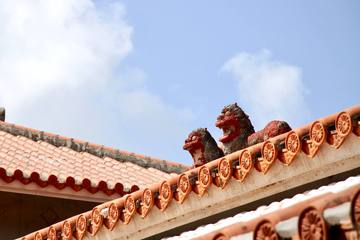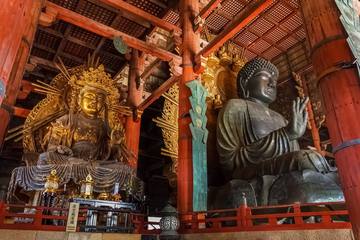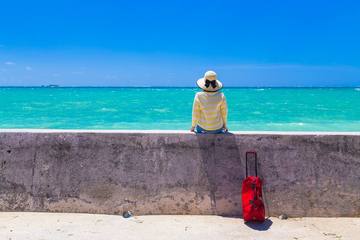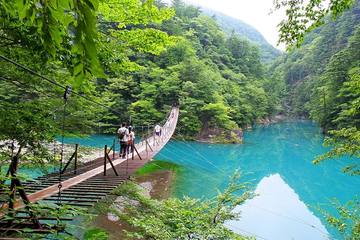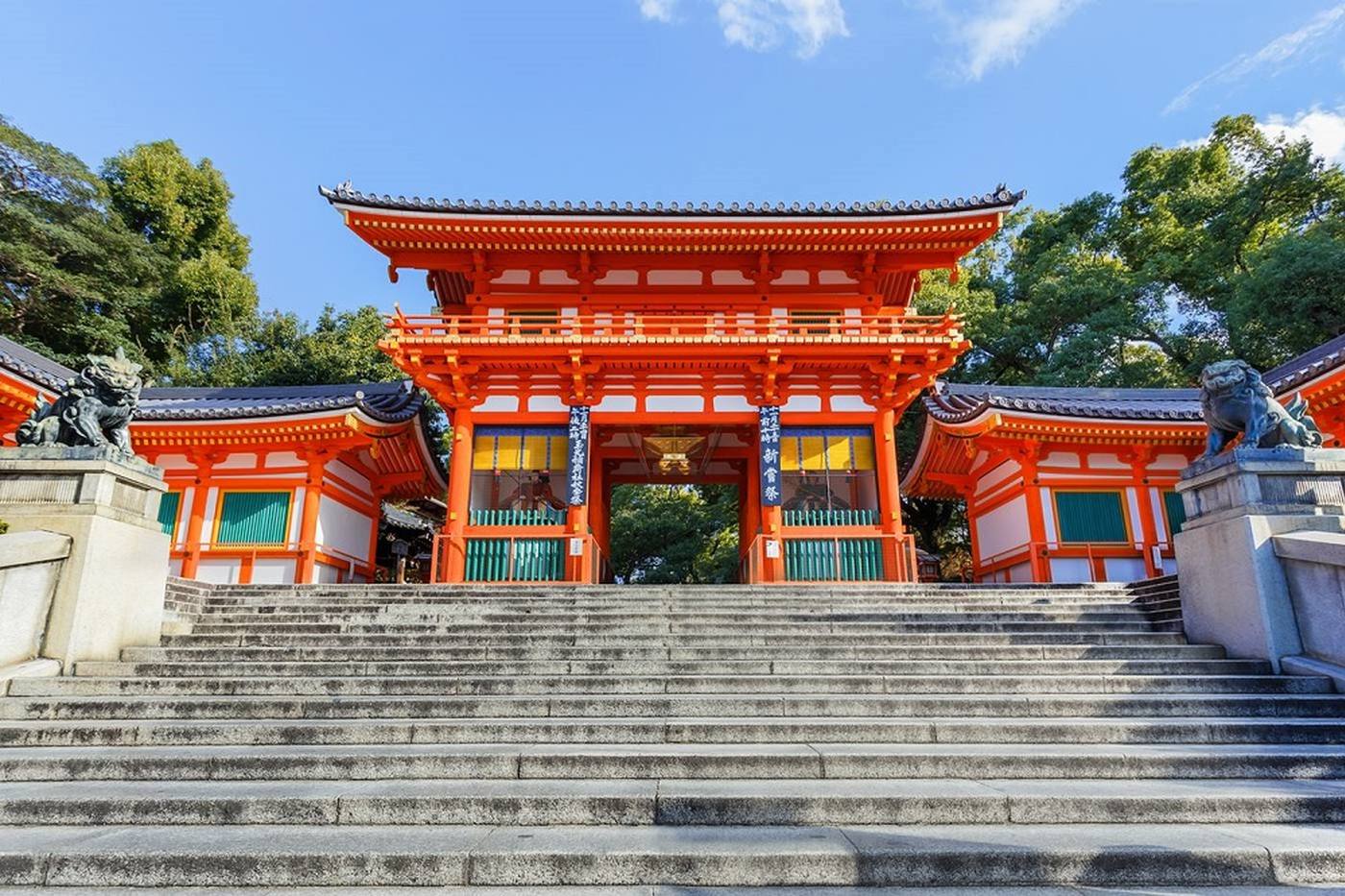
Comprehensive Guide to Yasaka Shrine! Introducing Basic Information and Photo Spots<Kyoto>
Yasaka Shrine, located in the Gion district, is a must-visit iconic tourist spot when exploring Kyoto. It has been protecting the eastern side of Kyoto since ancient times. Yasaka Shrine is the headquarters of shrines dedicated to Susanoo-no-Mikoto, an important deity in Japanese mythology, and is believed to offer blessings for warding off epidemics and ensuring good health. The shrine grounds also include several subordinate shrines, creating a powerful spiritual site where multiple deities gather.
In this article, we will provide a thorough introduction to the history, basic information, highlights to know in advance, blessings, and surrounding attractions of Yasaka Shrine.
*This article is translated using ChatGPT.
For the latest information on each tourist spot and facility, we recommend checking the official website.
- 日本 、京都府
Basic Information about Yasaka Shrine
History
Yasaka Shrine enshrines three important deities: Susanoo-no-Mikoto, Kushinada-hime-no-Mikoto, and Yaho-no-mikoto. It is said to have its origins in the year 656 when a Korean envoy named "Ilishi" brought the enshrined deity Susanoo-no-Mikoto to Yasaka in Yamashiro Province (present-day southern Kyoto Prefecture) during the reign of Emperor Saimei.
During the time when Shinto and Buddhism were blended and worshipped in Japan, the shrine was known as "Gionsha." The name "Gion" is said to have originated from the Gion Shōja, the birthplace of Shakyamuni Buddha. The Chinese Taoist deity Gozu Tennō, regarded as the guardian deity of Gion Shōja, was identified with Susanoo-no-Mikoto from Japanese mythology. As a powerful god capable of warding off calamities, he garnered reverence. This is considered the reason why Yasaka Shrine today is believed to possess the power to ward off epidemics.
In 1868, under the Shinto-Buddhist Separation Order, the shrine's name was changed to "Yasaka Shrine," but it is still affectionately referred to as "Gion-san" or "Yasaka-san."
Access
Address: 625 Gionmachi Kitagawa, Higashiyama-ku, Kyoto City, Kyoto Prefecture.
If you are accessing Yasaka Shrine from JR Kyoto Station, it is convenient to use the city bus without transfers. Take the bus on the 206 line and get off at the "Gion" bus stop, which is right next to the shrine. There are also two nearby train stations: Gion-Shijo Station on the Keihan Line (approximately 5 minutes on foot) and Hankyu Kawaramachi Station (approximately 8 minutes on foot) for those using the Keihan and Hankyu lines, respectively.
There is a parking lot for visitors within the shrine grounds, so accessing by car is also possible. Additionally, there are paid coin parking options available in the surrounding area.
Visiting Hours and Admission Fee
Yasaka Shrine is open 24 hours a day, and admission is free. There is no closing time, allowing visitors to freely explore the grounds. If you wish to purchase amulets, receive a seal stamp (goshuin), or request a prayer, it is recommended to visit during the shrine office's operating hours from 9:00AM to 4:00PM.
Highlights of Yasaka Shrine
Nishiromon Gate and Nanaromon Gate
The Nishiromon Gate is a towering gate located on the Shijo Street side of Yasaka Shrine and serves as its iconic landmark. Although it was destroyed during the Ōnin War, it was rebuilt in 1497 and relocated and expanded in 1913, remaining in its current form. A popular photo spot here is the stone steps in front of the gate. Taking a photo from below captures the gate's vibrant vermilion color, making it truly photogenic.
The Nanaromon Gate, as the name suggests, is a gate located on the southern side of Yasaka Shrine and serves as the main entrance. The original gate unfortunately burned down during the late Edo period, but a reconstruction from the Meiji era has been preserved to this day. The stone torii gate in front of the Nanaromon Gate is designated as an Important Cultural Property by the government and passing through this gate is the proper way to enter the approach to the shrine.
Honden (Main Hall)
The main hall of Yasaka Shrine was rebuilt by Tokugawa Ietsuna in 1654. It features a Gion-zukuri architectural style, where the main hall and the haiden (worship hall) are connected under one roof, resembling Buddhist architecture. This style is unique to Yasaka Shrine. Known as one of the largest shrine buildings in Japan, it is designated as an Important Cultural Property by the government.
Utsukushi-gozen-sha (Beauty Shrine)
One of several auxiliary shrines within the precincts, Utsukushi-gozen-sha enshrines three goddesses known for their beauty. It is believed to bring blessings for beauty and is highly revered, particularly among women. The spring water that gushes out in front of the shrine is called "beauty water." It is said that applying a few drops of this water to the skin promotes healthy and beautiful skin, gaining a reputation for its beauty-enhancing effects.
Ōkuninushi Shrine
Another auxiliary shrine within the precincts, Ōkuninushi Shrine is dedicated to Ōkuninushi-no-Mikoto, a deity known as Daikoku-sama, the god of good fortune. It is believed to bring blessings for a good match in marriage and is beloved as a deity of matchmaking.
In addition to these, there are several other auxiliary shrines within the precincts, including a cutlery shrine dedicated to the god of blacksmithing and a shrine for warding off epidemics, known for its blessings against diseases.
Main Events

Okera Festival
The Okera Festival is the first festival of the year and takes place from 5:00 AM on New Year's Day. After the Joya-no-kane (New Year's Eve bell-ringing ceremony) held at 7:00 PM on New Year's Eve, the "wakebune" tree, where visitors' wishes are written, is set ablaze in a sacred fire. This sacred fire is continuously tended from New Year's Eve until the early morning of New Year's Day, creating a tradition of fire that has become a staple of Kyoto's New Year celebrations.
The remaining fire rope is kept in the kitchen as a "fire warding amulet" and is believed to protect against fires.
Hatsumōde (First Shrine Visit)
Following the Okera Festival is Hatsumōde, the first shrine visit of the year. The shrine is bustling with visitors during the first three days of the year. Along the approach, food stalls line up, and on January 3rd, the "Genshi-sai" ceremony, where prayers for the new year are offered, takes place. The dance hall, usually used for weddings, hosts the "Hatsu-noh Hōnō" performance and various events such as the "Karuta Hajime-shiki" (Karuta card game) are held, creating a lively atmosphere to celebrate the New Year.
Hanatoro (Path of Flowers and Light)
Held for about two weeks every March, this illumination event takes place throughout the Higashiyama area. Inside Yasaka Shrine, 108 lanterns are lit, creating an atmosphere full of charm. During this period, the main hall, designated as an Important Cultural Property, can be specially visited.
The surrounding areas, such as Ninen-zaka and Sannen-zaka, are also illuminated, and the gentle glow of the lanterns illuminates the streets of Kyoto, giving the feeling of stepping back in time to the ancient capital.
Gion Festival
The Gion Festival is a month-long traditional event held from July 1st to July 31st at Yasaka Shrine. It has a history of over 1,000 years and attracts visitors from all over the country. It is also counted as one of Japan's three major festivals and is well-known for its extravagant floats (yamaboko) and procession of portable shrines (mikoshi). As a valuable cultural heritage that traces the origins of Japanese summer festivals, it is registered as an Intangible Cultural Heritage by UNESCO.
The history of the Gion Festival dates back to the year 869 when a widespread epidemic occurred in various parts of Japan. To pray for protection from the epidemic, 66 floats were erected to enshrine the deities of Gion. The festival is accompanied by the wearing of "Sominsourai no Shisonnari" charms, which are believed to ward off diseases. The distinctive yamaboko floats that are seen today are said to have appeared around the Muromachi period.
The highlight of the festival is the yamaboko procession held on July 17th (pre-festival) and July 24th (main festival). During the pre-festival, starting from 9:00 AM, 33 floats parade through Shijo Street and Kawaramachi Street. Each float has unique decorations representing different neighborhoods, creating a vibrant and captivating spectacle. It is a must-see experience to witness the enthusiasm of the townspeople as they energetically carry the floats, some weighing up to 12 tons, and feel the lively energy of the festival firsthand.
Yasaka Shrine's Souvenirs
Amulets
At the souvenir shop of Yasaka Shrine, you can obtain amulets that are associated with the blessings of the enshrined deities. The "Sominsourai no Mamori" amulet is believed to ward off misfortune and is popular among those who are in their "unlucky" years. The "Bi Mamori" amulet grants blessings for inner and outer beauty, while the "Ryōen Jōju Mamori" amulet, associated with Ōkuninushi Shrine, not only brings good fortune in romantic relationships but also helps foster various connections in interpersonal relationships and work-related matters.
Goshuin (Temple Seal)
At Yasaka Shrine, you can receive a hand-drawn goshuin (temple seal) for an offering of 500 yen. Additionally, there are special goshuin available, such as the "Seiryū Goshuin," associated with the legend that the shrine was built on a place where the power of the dragon emanates, and limited edition goshuin, like the "Goreikai Goshuin," only available during the Gion Festival. You can also obtain goshuin from other shrines within the precincts, such as Bimyōsha and Ōkuninushi Shrine. So, after paying your respects, make sure to receive them.
Omikuji (Fortune Slip)
You can draw omikuji (fortune slips) at the souvenir shop. If the content is favorable, you can take it home, and if it's unfavorable, you can tie it to the dedicated string prepared within the shrine grounds.
Surrounding Information of Yasaka Shrine
Maruyama Park
Adjacent to Yasaka Shrine, Maruyama Park is renowned for its nighttime cherry blossoms. The park is filled with numerous Somei Yoshino cherry trees, and the sight of them blooming together is truly breathtaking. In particular, the weeping cherry tree, over 80 years old, exudes a mysterious atmosphere. When visiting Kyoto in spring, this park is a must-see destination.
Kiyomizu-dera Temple
Kiyomizu-dera Temple, a must-visit spot in Kyoto, is located about a 20-minute walk from Yasaka Shrine. The path that connects these two temples, called "Nene no Michi," is a picturesque spot filled with Kyoto's charm, perfect for taking photographs. Named after Nene, the wife of Toyotomi Hideyoshi, this narrow path allows you to enjoy the profound atmosphere of Kyoto. Ninen-zaka and Sannen-zaka follow with preserved streets that evoke the atmosphere of ancient Kyoto. With souvenir shops and cafes along the way, you can also take a break. Moreover, there are many sites related to the Shinsengumi and Ryoma Sakamoto, who played active roles during the Meiji Restoration, making it a recommended route that everyone can enjoy!
Heian Shrine
Passing through Maruyama Park from Yasaka Shrine, you will find Heian Shrine, which is about a 20-minute walk away. It is another easily accessible attraction. The garden of Heian Shrine is filled with seasonal plants such as pampas grass, hydrangeas, water lilies, and irises, allowing you to enjoy different expressions depending on the time of your visit. It is highly recommended even for repeat visitors.
Yasaka Kōshin-dō
This temple is located in Daikokuyama Enmei-in Kongō-ji. It is famous for the "Kukuri-zaru," a colorful amulet. It is believed to bring blessings for the recovery from illnesses and is particularly popular among those suffering from back pain, headaches, and neuralgia. The vibrant colors make it a photogenic spot!
Lunch & Gourmet
Sohonne Yudofu Okutan Kiyomizu
A long-established restaurant that has been beloved since the early Edo period, serving delicious tofu dishes. You can enjoy freshly made tofu from the tofu workshop at the restaurant. The guest room offers a luxurious view of a natural and rich garden, allowing you to enjoy a relaxing meal in a high-quality setting.
Address: 340 Shimizu 3-chome, Higashiyama-ku, Kyoto
Dessert Cafe Chōrakukan
A historic cafe designated as a Tangible Cultural Property by Kyoto City, where you can enjoy tea in a historic guesthouse. The sophisticated sweet menu, including afternoon tea and sangria made with seasonal fruits, as well as the attention to detail in the furnishings, allows you to appreciate its artistic beauty. Additionally, during cafe hours, you can enjoy live piano performances.
Address: 604 Maruyama-cho, Higashiyama-ku, Kyoto
Niken Tea House
A tea house operated by Nakamura-rou, a long-established restaurant. Their famous dish, "Takara Tofu," has maintained its unchanged taste for over 480 years and continues to be loved by visitors. In addition to their dining menu, they also offer a variety of sweet treats, including matcha parfaits.
Address: Yasaka Shrine, within Gion, Higashiyama-ku, Kyoto
Local Optional Tours are Recommended for Sightseeing at Yasaka Shrine!
With so many must-see spots around Yasaka Shrine, a sightseeing tour by rickshaw is highly recommended. Why not immerse yourself in the explanations from the experienced rickshaw drivers who know everything about Kyoto while feeling the breeze of Kyoto on your skin? VELTRA offers local optional tours for private rickshaw rides, allowing you to start your sightseeing right after arrival and enjoy your trip comfortably! With a private guide, you can discuss your sightseeing route and get detailed local information. We also introduce unique local optional tours such as kimono rental services. Be sure to check them out!
*Please note that transportation fares, facility fees, and operating hours are subject to change without notice. For the latest information, please also check the official website.
*Thank you for reading the article!
To improve YOKKA's service, we kindly request your participation in a survey below.
YOKKA


